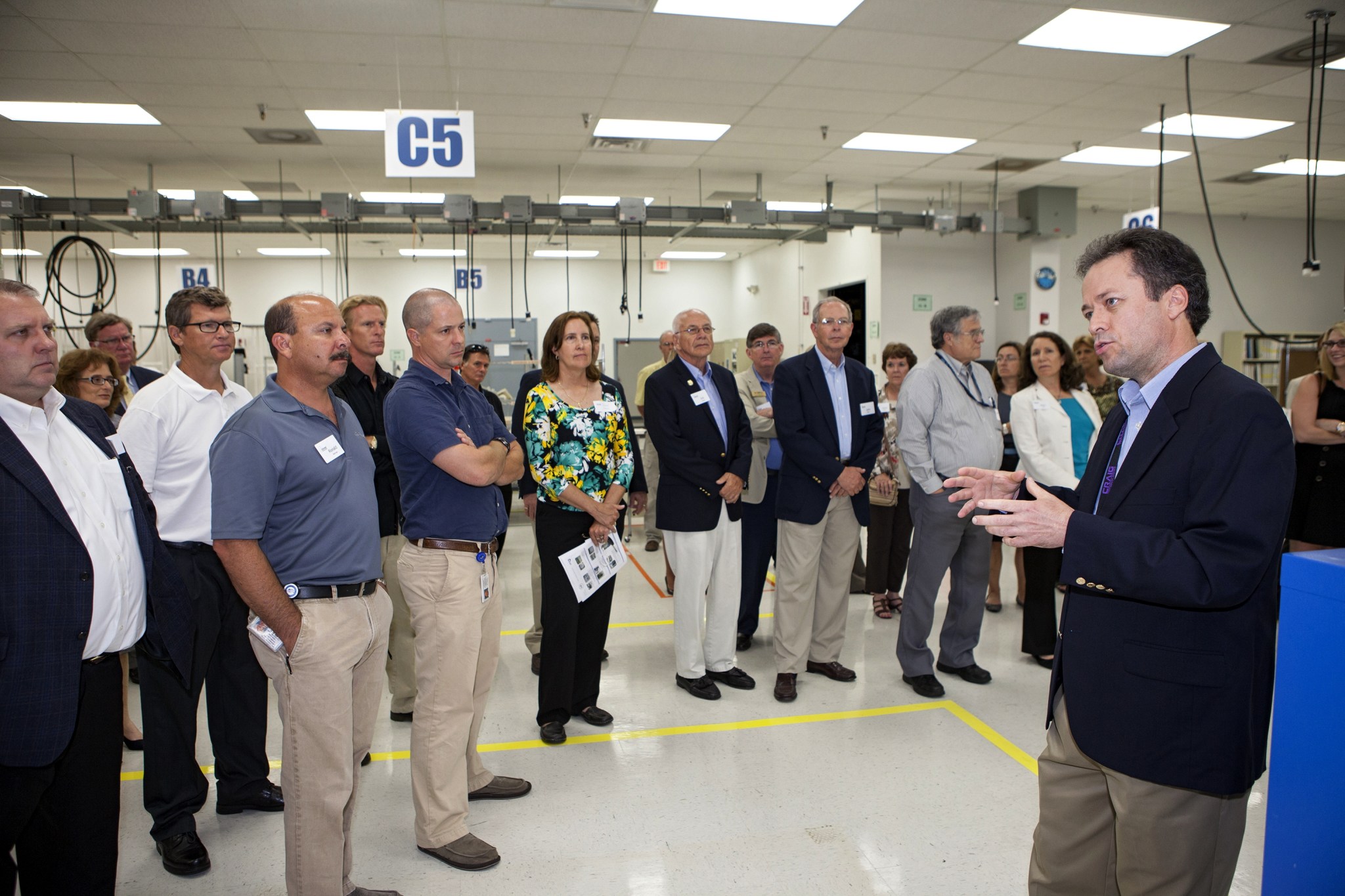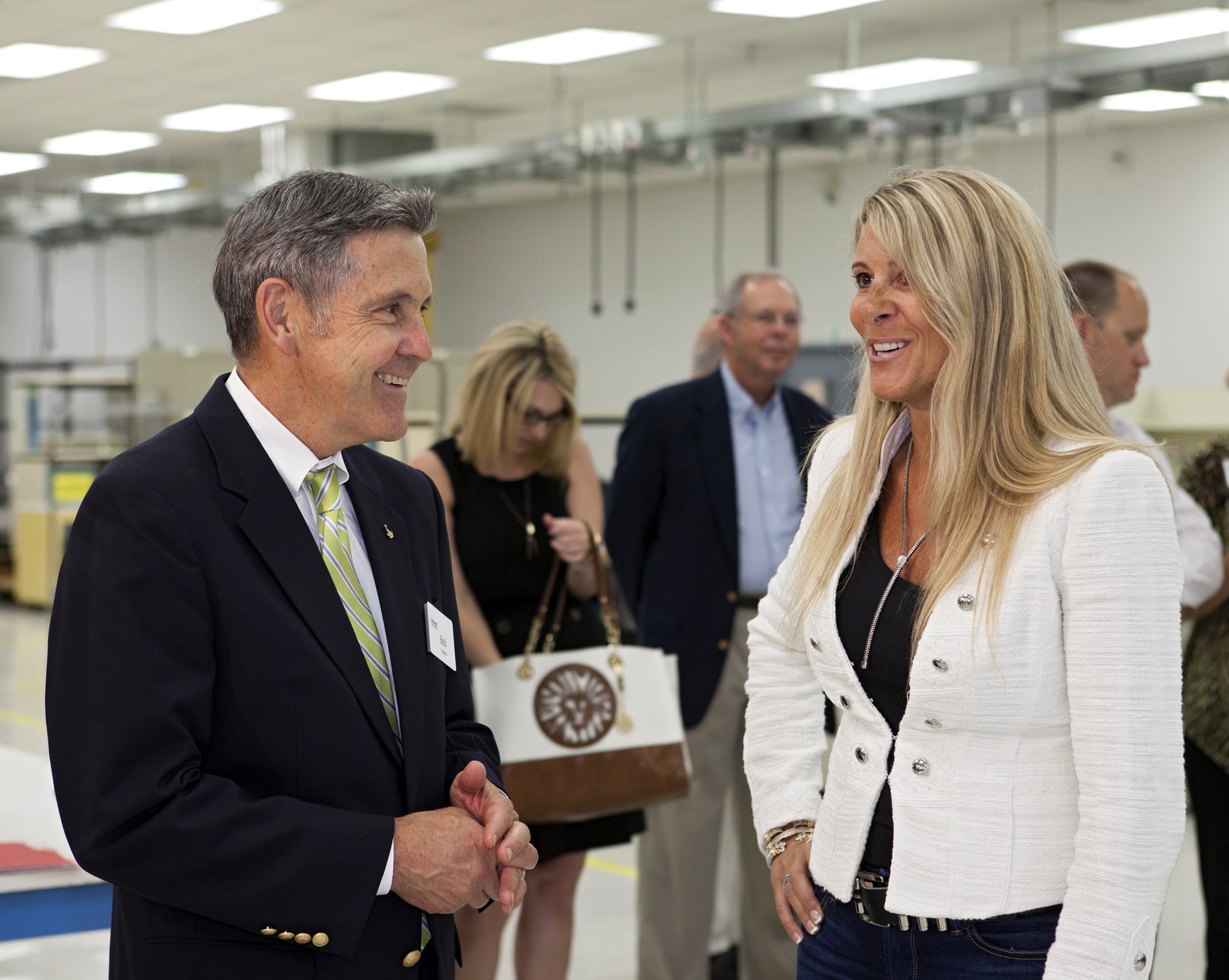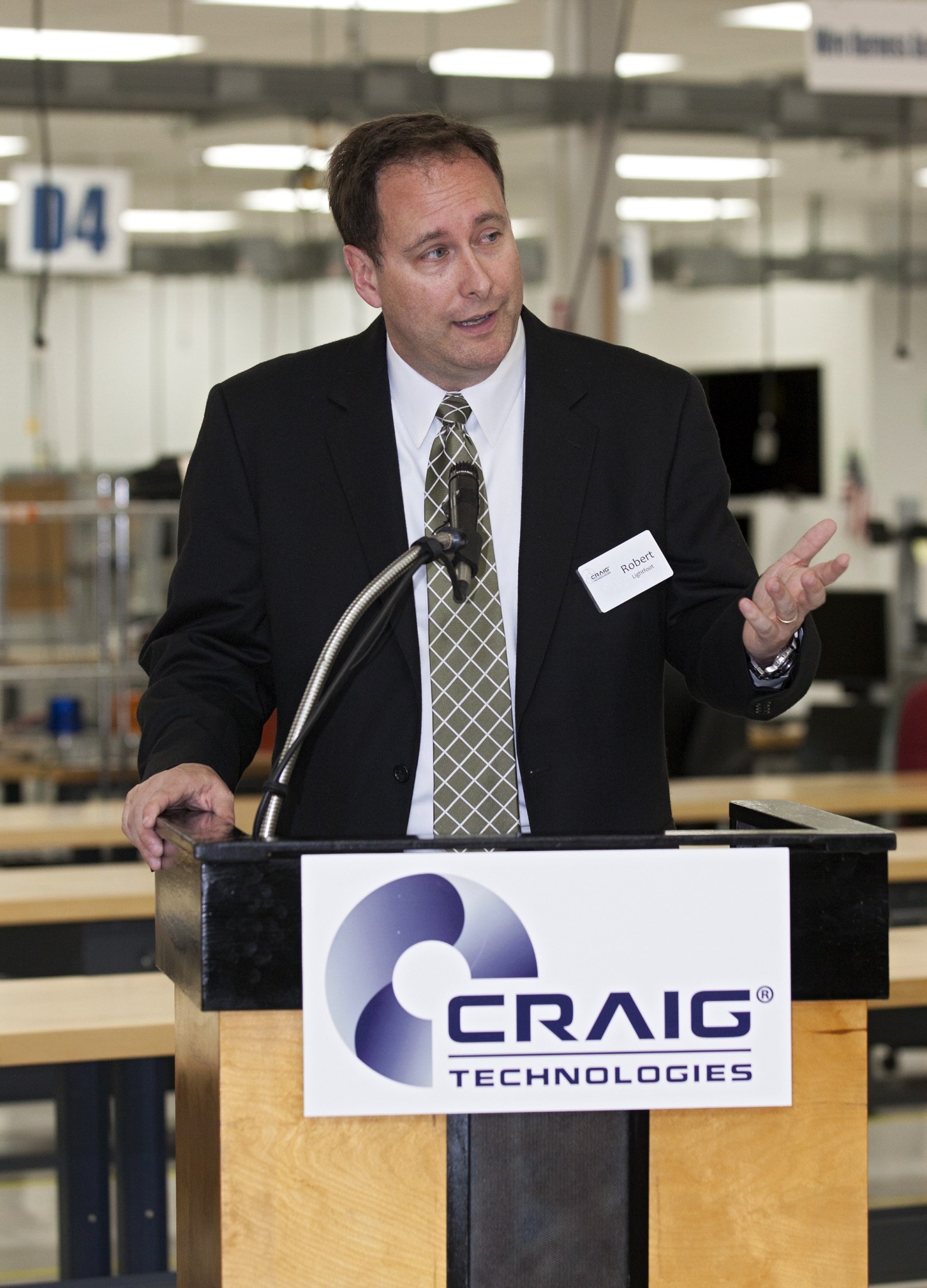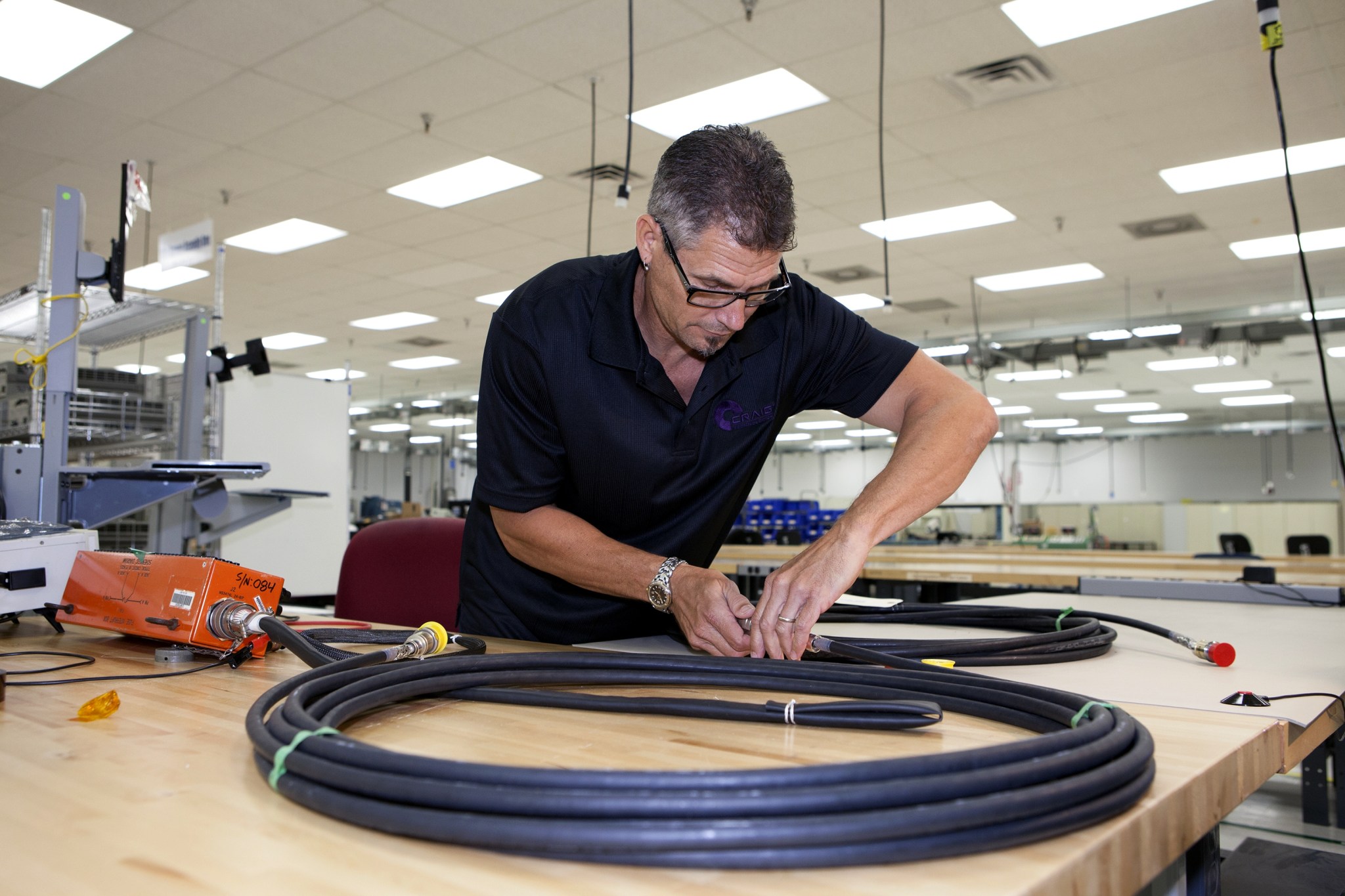In June of last year, NASA signed a partnership agreement with Craig Technologies to maintain an inventory of unique processing and manufacturing equipment for future mission support at the agency’s Kennedy Space Center in Florida. NASA Associate Administrator Robert Lightfoot and Kennedy’s center director, Bob Cabana, recently toured the Cape Canaveral, Fla., facility, formerly known as the NASA Shuttle Logistics Depot (NSLD). In its new role, it is now the Aerospace and Defense Manufacturing Center (ADMC).
During the space shuttle era, NASA’s space program operations contractor, United Space Alliance, operated the NSLD providing flight hardware and cable fabrication. It also was used in manufacturing, repair and inspection of spaceflight hardware, avionics and ground support equipment.
“I had the privilege of being on the other end of the quality products that this facility turned out keeping our shuttles flying,” said Cabana, a former space shuttle commander. “I want you to know how much it means to me to see this facility still alive today. We’re keeping alive a capability that we’re going to need for the future.”
Under a five-year, non-reimbursable Space Act Agreement (SAA), NASA has loaned hundreds of pieces of equipment to Craig Technologies retaining important assets and resulting in a significant cost savings. The NASA inventory has been enhanced with Craig Technologies’ assets and investment to make an even more robust capability for wider application.
“This is an outstanding partnership that we are putting in place,” Cabana said. “Not only are we keeping this capability alive, but we save NASA and the taxpayer close to $3.4 million.”
NASA is developing other industry partnerships to maintain agency equipment and facilities.
“As the Kennedy Space Center turns into a multiuser facility, instead of being focused on one item like the shuttle,” Lightfoot said, “more users, more people will take advantage of the investments we’ve made in this facility.”
Established in 1999, Craig Technologies provides engineering and technical services to defense and government agencies nationwide. The company began independently operating the ADMC in January.
“I’m just very proud and very honored to have Craig Technologies to be trusted as the caretaker of these NASA assets for the next four and a half years,” said Carol Craig, the company’s founder and chief executive officer.
In October 2012, Craig Technologies consolidated its corporate headquarters and manufacturing division to occupy the 161,000-square-foot ADMC facility where 53 people are employed.

“Through the SAA, NASA has provided Craig Technologies with the ability to use and maintain their 1,600 pieces of specialty equipment,” said Mark Mikolajczyk, president of Craig Technologies. “ADMC continues to be capable of repairing, manufacturing and testing human spaceflight-rated hardware. We are also supporting commercial space customers, satellite manufacturers and varied commercial manufacturing fabrication and testing.”
Cabana noted those capabilities will be crucial for several NASA programs on the near horizon such as the Space Launch System (SLS), the Orion multi-purpose crew vehicle (MPCV) and the Commercial Crew Program.
“It truly is a benefit for all of us and I look forward to continued success working with Craig Technologies as we move forward supporting the SLS, MPCV — our heavy-lift vehicle and Orion crew vehicle — as we charge off exploring into the future,” he said.
Lightfoot also looked ahead to the agency’s efforts to explore beyond low-Earth orbit.
“This is an exciting time as we get ready to start on this asteroid mission the president has asked us to do,” he said. “There is going to be so much more going on here the next six to seven years. It’s going to be exciting.”
Craig echoed Lightfoot’s view that the nation’s space efforts are entering an important new era.
“American ingenuity helped us realize our dreams and lift off into space,” she said. “I believe it’s this same passion that will help to revitalize our industry with advanced manufacturing and research initiatives through private-public partnerships such as the one we have with NASA.”





























